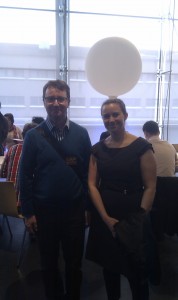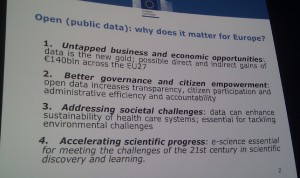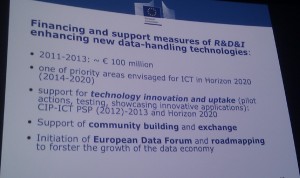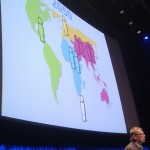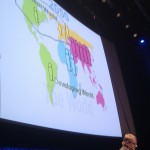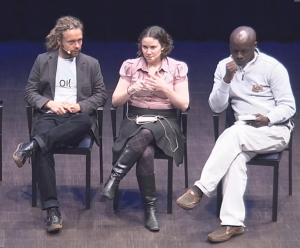TL;DR – I’ve taken on a new role, and this blog post explains why and how I came to the decision I did 🙂 Please scroll to the bottom or see my LinkedIn page if you just want to jump to the job.
If you’re reading this blog, you probably already know that I am passionate about and professionally committed to genuine and systemic reform/renewal of the public sector. I have spent the last decade in public service, and a decade before that in the tech sector, mostly focused on how to create better government services and policies, with digital/data transformation often providing a useful means for much needed reform.
I have written extensively about the many barriers facing systemic reform of the public sector, including on my blog. I know most public servants want change, but at this exact point in time there is a pressing need to:
- create greater “demand” for genuine public sector renewal – demand is needed to prioritise investment in systemic reform, otherwise real transformation efforts become the can that continues to get kicked down the road,
- explore and invest in creating a more trustworthy public sector in a time of rapidly declining public trust, and
- explore what “good” could look like – especially in a world of rolling, continuous emergencies, where people understandably expect more of gov than ever before.
So when I left Service Canada, I realised I most want to focus on three key areas to address these pressing needs, to hopefully help make a real difference:
- A Transformed Public Sector: although we see a lot of effort around “service transformation”, there are still very few transformation programs that actually change the system. There are still significant barriers to create a genuinely adaptive, agile, human-centred, test driven and humane public sector, because it requires transformation of structures, budgetary approaches, program/project/product management, public engagement and culture across the sector, especially if we are to close the widening gap between policy and delivery. There is only rarely a planned or co-created future state being worked towards that would result in better, more equitable and more inclusive services and policies for all, and I suggest if you don’t have a clear and distinct future state, then you likely aren’t transforming but rather doing an iteration or digitisation of the current state. For example, RPA is usually used for just automating the status quo, and rarely a tool that enables process, policy, service or system redesign.
Practically, I’d like to help shape future oriented, human-centred and adaptive policies, services, strategies and programs with governments. - A Trustworthy Public Sector: public trust and confidence in public institutions is paramount to a stable and equitable society, but trust is in decline and communities are being gamed like never before. It is critical that public institutions take some time now to stop asking for trust (the “social licence” route), and to start focusing on how to be considered trustworthy. I think “trustworthy government” requires public participation as an important starting point but government systems and services also need to be reliable, traceable to their legal authority, testable against the law (regulation and legislation), audited in real time, easily understood by and appealable by citizens, and monitored for accountability. I’d basically like to see a modern implementation of Administrative Law coupled with a culture of openness, accountability and participatory governance with peer review, operational transparency and public participation. Finally, to be considered trustworthy, we need to collectively support the existential renewal of the sector, to support and demand a public service that is a long term steward for public good, not just a tool of the government of the day.
Practically, I’ll be continuing to work on Legislation/Regulation as Code, explainable and high veracity systems, auditable and appealable systems, and of course, participatory governance/democracy initiatives. Imagine if we had a publicly available community repository of legislation as code to build upon and test against 🙂 What does a blend of participatory and representative democracy look like, that gets the best of both? - An Augmented Public Sector: finally, I want to explore and support the timely concept of augmentation (rather than automation) in our public sector, whether it be service augmentation (“Alexa, I’ve lost my job, help me get support”), workforce augmentation (Hey Google, show me the human impact of this policy change across NSW”), or human augmentation (“I want to be the world’s best rock climber, so I might add a few more limbs for the Auglympics next year”). Augmentation to me is where a system purposefully supports humans and machines/tech to each do what they do best, without compromising our human values or the ethical and humane obligations we each have to each other. Too often I see “efficiency” projects that simply speed up or automate the status quo, or remove staff from a process, but we need to have better processes, more inclusive services, and more humane experiences with the public sector. There is no point speeding up the journey off a cliff 🙂 Rampant automation often undermines or misses the opportunity for better, more equitable, more ethical or more humane services and policies, so exploring and demonstrating the opportunities for service and workforce augmentation would be quite timely. Exploring and growing the understanding of human augmentation is also important as we will need to collectively deal with the potential implications for social cohesion when body hacking becomes more mainstream, given the human form is considered everything from sacred to irrelevant, depending on your culture and personal comfort or beliefs.
Practically, this means exploring and demonstrating AI/AR/VR for the use cases above and getting away from pure automation uses of AI. Ideally in collaboration with others who are committed to more humane futures.
So, having decided these are the three areas I’d like to focus on, I had to consider where could I work to explore them? Where could possibly provide the breadth of opportunities to explore, build, influence, strategise and collaborate on public sector transformation? Sadly, many departments are pushed to stay within their wheelhouse and have become highly reactive to politics, and it is hard to drive a 5 or 10 year cross portfolio and systemic transformation agenda (let alone a 50 year vision!) within the constraints of an election cycle. Ideally, we need public institutions that are stable, operationally independent and confident stewards for long term public good, but this is a chicken and egg issue.
So I decided to work from the outside for a little while. A public service sabbatical of sorts, where I can contribute my expertise in the public domain, explore and demonstrate what “good” could look like, help build the demand and ambition for change (with executives, politics and the public), participate in community initiatives and grow my own experience. I plan to return to the sector to help drive systemic change when demand supports it 🙂
I’m pleased to say that after months of considering some very interesting and exciting options across different sectors, I was approached for a role as a Strategic Advisor with AWS, working with a small team called Strategic Development that works with the public sector across Australia, New Zealand and Oceania. Our focus is on supporting public institutions to dream big and explore new horizons, to achieve long term policy outcomes and sustainable public good, and to develop genuinely transformative plans with practical roadmaps to get there. As a team of accomplished public servants, we all understand the domain and want to help support and champion the sector and all public servants 🙂 I think I can both contribute a lot and learn a lot from this role, and it gives me a strong basis to drive my three objectives.
I will continue to work in the open, not just because it is my preference, but for peer review, collaboration and so you can all help me to keep it real and stay on track with the mission 🙂 Thanks to all those who advised me on this decision, and I hope to join a number of government advisory groups and boards where I can usefully contribute.
Please get in touch with me on piagov [at] amazon.com if you’d like to chat about any of the above! 🙂 I’m looking forward to collaborating on ambitious and transformative initiatives that create more mission oriented, values driven, humane and participatory public sectors across the region 🙂
In other news, my family had to return to Australia. Sick family + NZ travel policies at the time = having to move country again, but luckily the family member has recovered and we are now only a flight away from family 🙂 We decided if we were in Aus that we wanted to live somewhere glorious so we moved to Broome (WA), which has been just wonderful. I’ll be traveling for events and conferences, but am always available online and I’m looking forward to reconnecting with the Australian tech/data and public sectors after the last few years in NZ with the Canadian Government.



